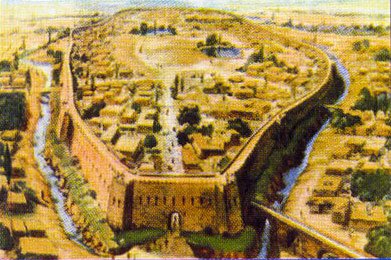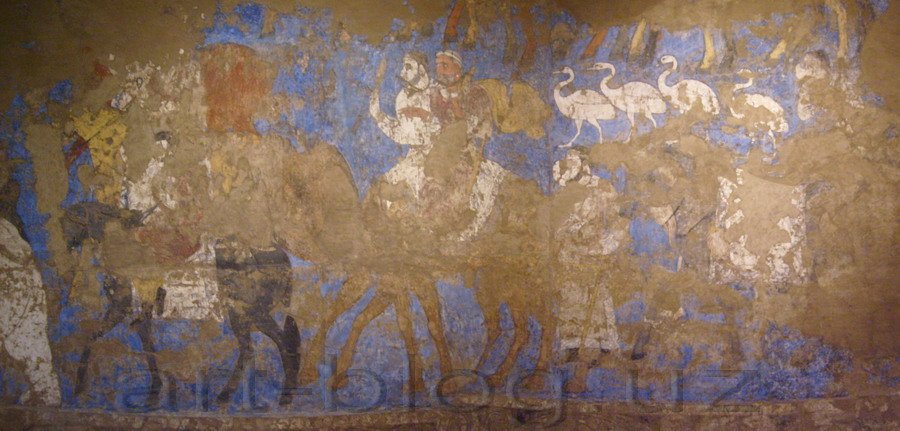Unfortunately, the format of this topic doesn’t allow to tell in detail about all the sights of this most interesting city in all respects. The material turned out to be quite voluminous, even taking into account the fact that I tried to take away the most relish from the most delicious, and to confine myself to just a couple of photos of each monument ... Therefore, I promise that in the future, I will tell you more about Samarkand's sights in more detail, breaking my story into several posts. In the meantime, let me offer you a survey article on the most visited monuments of architecture of His Majesty Samarkand!
Twenty-five centuries ago ...
The history of this ancient city numbers more than 2750 years. It is one of the oldest cities in the world - the same age as Rome and the very first Olympic Games in ancient Greece. For the first time the city is mentioned in ancient Greek and Roman sources under the name of Marakanda.
In the ancient holy book Avesta one of the most ancient states of the world is mentioned - Sogd. And Marakand was its capital. In the VI century BC. Marakanda became part of the Achaemenid empire and was in it until the IV century BC until Achaemenides was defeated by Alexander the Great.
The population of Sogd at first greeted Alexander, taking him for a liberator who would grant this land freedom. But very soon it became clear that there could not be any independence of speech and the Sogdians raised an uprising led by the aristocrat Spitamen. The barbarous attitude of the Macedonians towards the local inhabitants only fueled enmity. A considerable impression on the local inhabitants was the execution of the Branhids, the Milesian Greeks, who 150 years before described events, were in charge of the Apollo temple and handed Xerxes his entire treasury. Of course, the Greeks didn’t forgive such betrayal and began to persecute their compatriots. Those, saving their lives, went farther and farther to the east and so ended up in the territory of Sogd, founded there their settlement. Alexander extremely cruelly dealt with them - he destroyed the entire population, cut down the sacred groves and burnt the whole town to ashes.
By the way, they say that Spitamen was friendly with the head of the Greek settlement and took his death seriously. Spitamen was quite European in appearance - light-skinned and blonde. In general, most of the Sogdians who inhabited the lands of ancient Uzbekistan and before they assimilated with Persians, Turks, Arabs and Mongols - had a light skin and hair color. According to the legend, the Spitamen family was derived from Siyavush (Zoroastrian deity, dying and resurrecting). The troops of the invincible Alexander had for the first time been defeated by Spitamen's troops. Spitamen was a skilled and experienced commander. He could still fight for a long time and defeat for the defeat of Alexander. Alexander understood this and therefore his scouts contacted Spivamen's wife, the daughter of one of the nobles, and promised her and her father huge wealth and inviolability if she killed her husband. It happened. She killed Spitamen and his head was presented to Alexander on a platter. According to legend, loyal associates condemned Alexander for such a victory. Even those Macedonian commanders who were defeated by Spitamen believed that this despicable victory was an unworthy warrior. Alexander understood this and in a "reward" he married a traitorous wife for his warrior, famous for his cruel treatment of women. A few months later, the traitor died, unable to withstand the beatings of her new husband.
But I got carried away. For two years the resistance of the Sogdians lasted and, nevertheless, they were subdued. And Marakanda as a stronghold of the insurgents was partially destroyed. But after the death of Alexander, the city began to revive again and returned to life and until the XIII century was known as Afrosiab. It was named after the mythical king Afrosiab. Afrosiab was located on high hills and was surrounded by moats around which water flowed.
Unfortunately, to the present day only the remnants of an ancient city with clay walls ceased to exist.
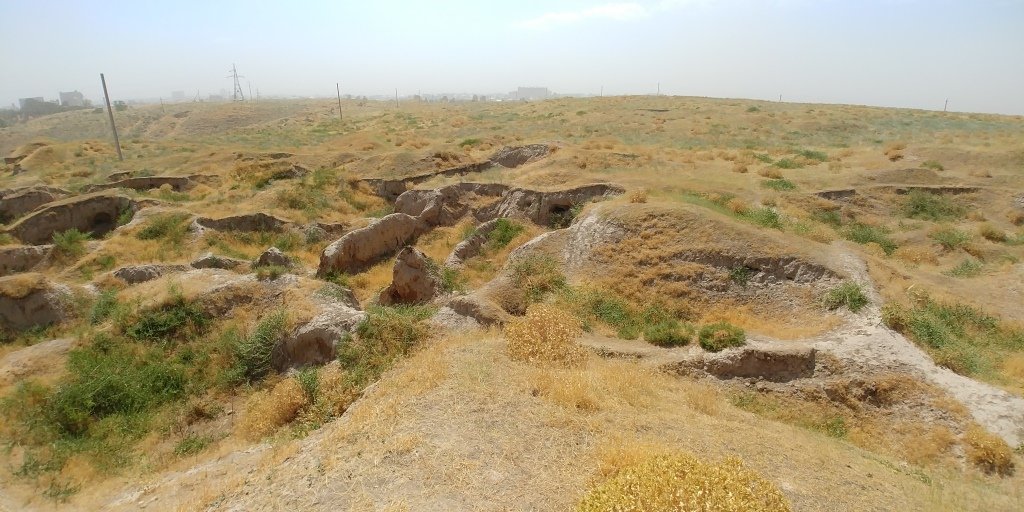
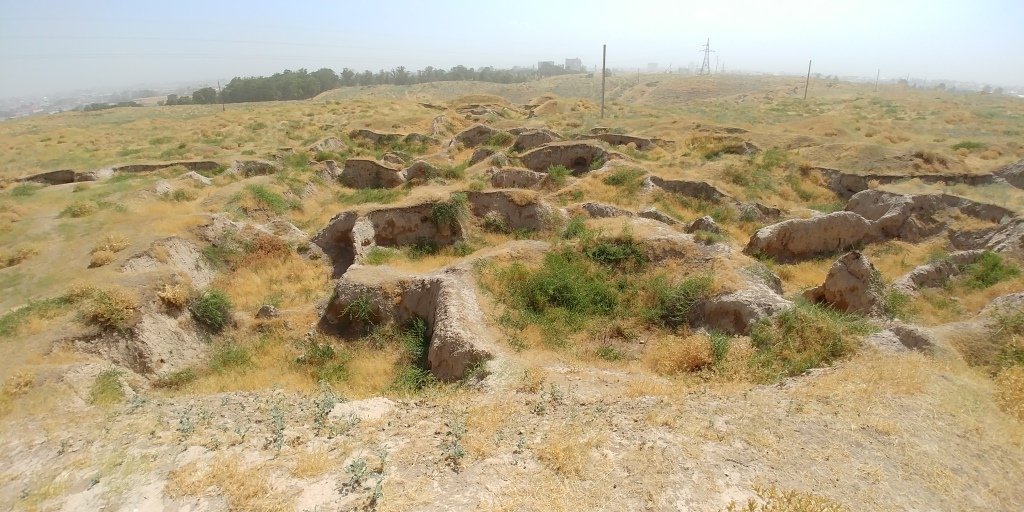
This is today Afrosiab congestion of lifeless hills, on which grows yellowed grass and camel's-thorn. And in the years of its heyday Afrosiab was one of the largest cultural and shopping centers of the East.
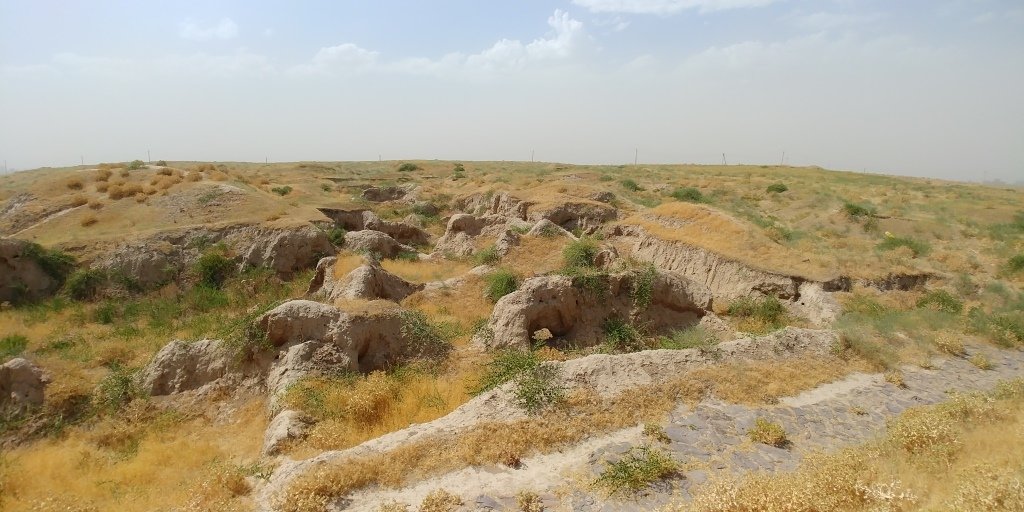

The city was surrounded by fortress walls and divided into quarters-guzars. On the territory of the city there was a caravan-saray (inn), a bazaar, quarters of artisans. Also here produced the famous paper, which was famous throughout the Silk Road. Interestingly, but the fact is - even then in Afrasiab had its own water supply and sewerage.
Eleven centuries ago ...
In the IX-X centuries. Maverannahr (from the Arabian "Place beyond the river" - the historical region, which included the lands of modern Uzbekistan, the west of Tajikistan and Kyrgyzstan, the east of Turkmenistan and the southern part of Kazakhstan) were captured by the Arabs. The governor of Maverannahr was made a local aristocrat from the Samani dynasty. Under one of the kings of this dynasty, Ismail Samani, Afrosiab once again began to flourish and became the largest cultural and economic center of the East.
In the XI century, on the eastern slope of Afrasiab began to form the architectural memorial complex Shahi-Zinda ("Living King").
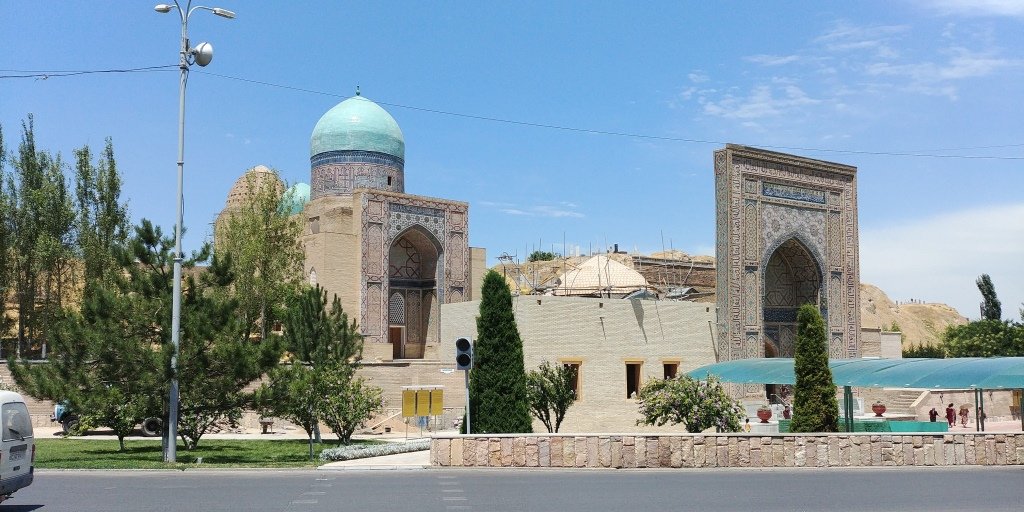
According to legend, the cousin of the Prophet Muhammad Qusam ibn Abbas came with an army to establish Islam in Afrasiab. During the battle he was wounded and took cover in one of the crevices (according to another version in the well). Since his body was not found, a legend arose that he is still alive. Therefore, the complex "Shahi Zinda" is called. "The living king." On the territory of the ensemble remained remains of tombstones of the XI-XII centuries, but most of the mausoleums are in the XIV-XV century. The mausoleums are richly decorated with majolica, glazed bricks and tiles.
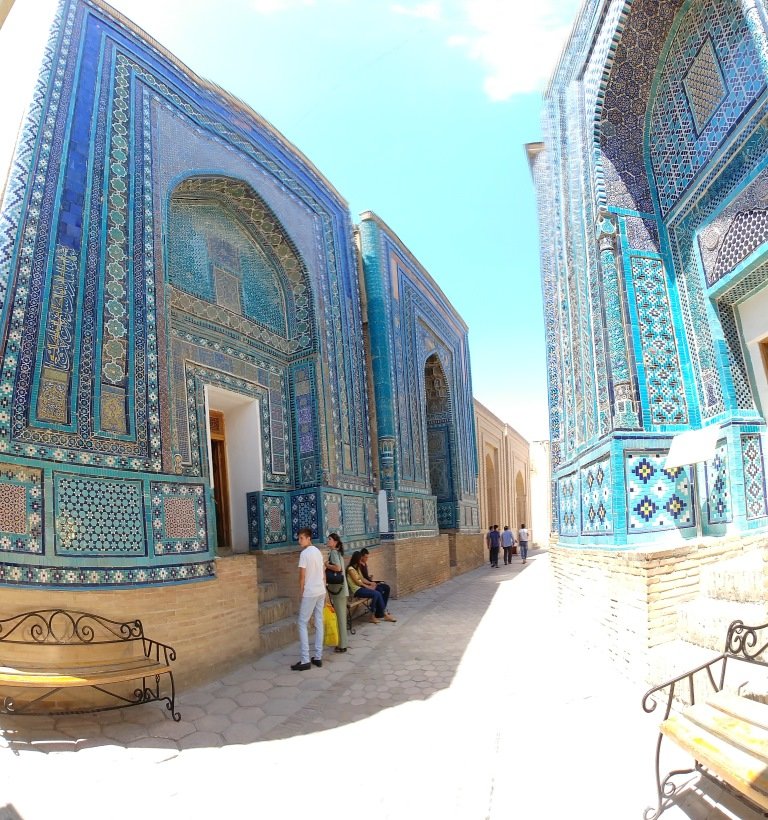
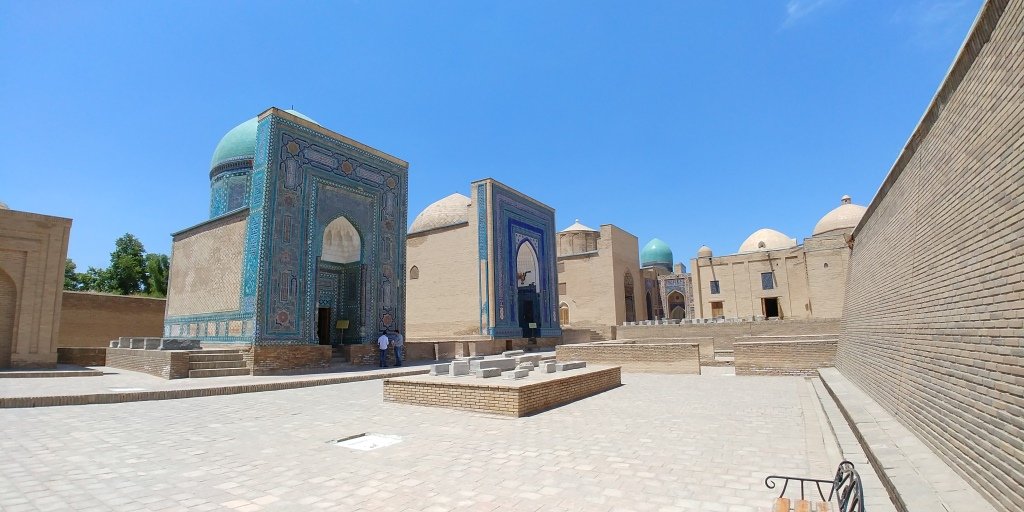
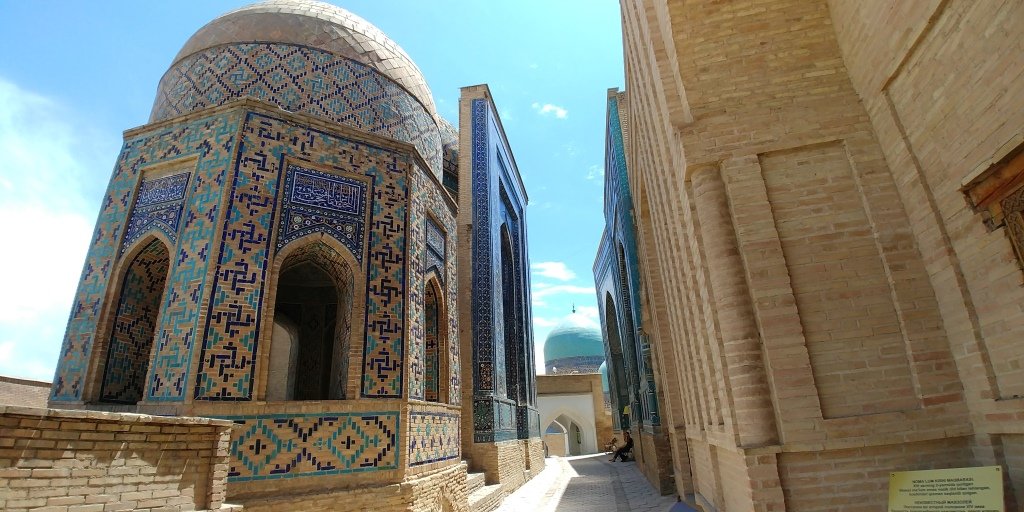
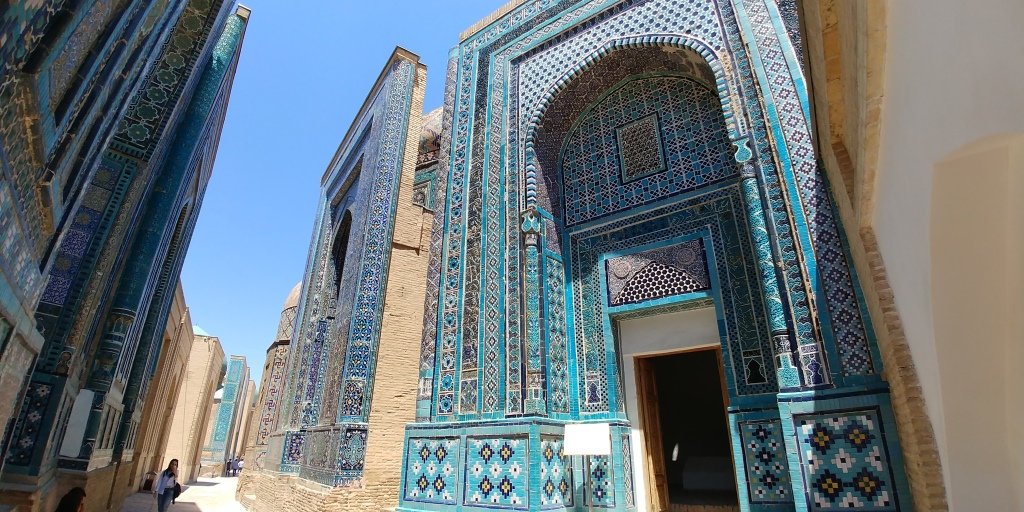
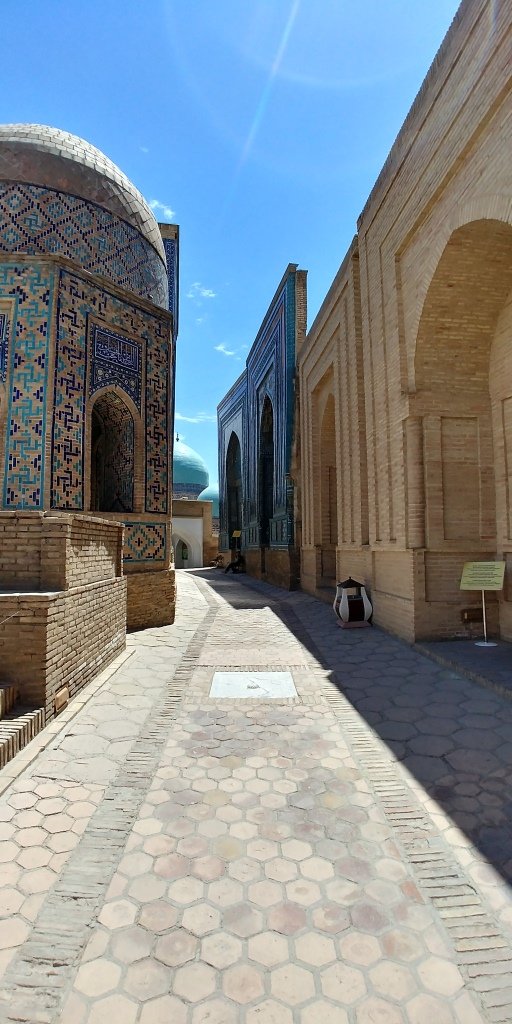
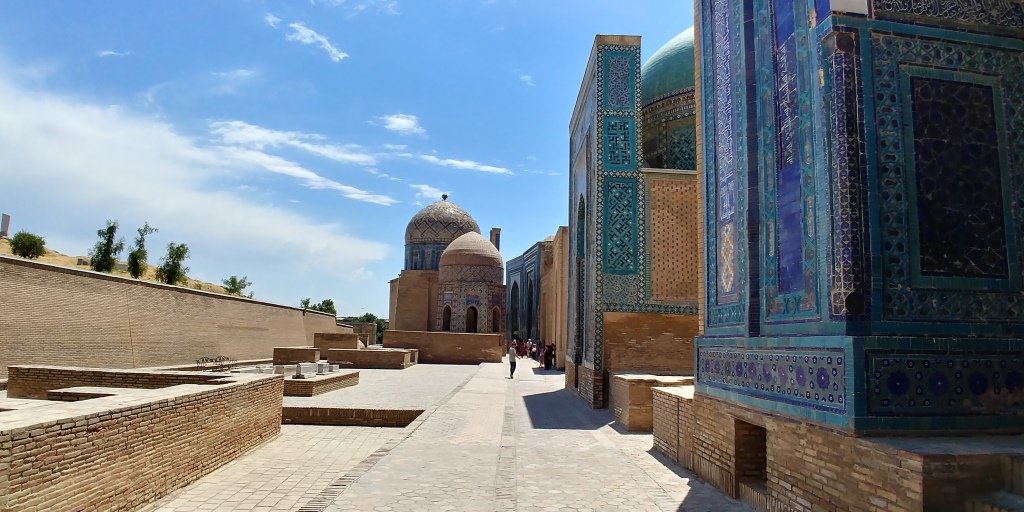
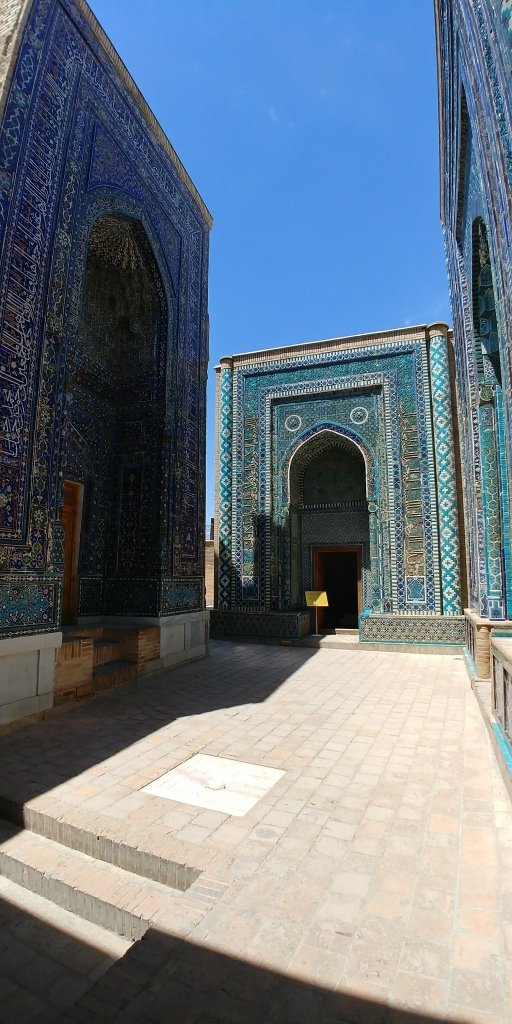
Shakhi-Zinda is the only archaeological and architectural monument in Samarkand, in which, including the cultural strata of Afrasiab, reflected almost 27-century-old history of the city.
Also on the territory of the ensemble Shahi-Zinda there is a famous staircase with 40 steps. According to tradition, you must climb up the stairs, and then go down, counting the steps. And if the number of both counts coincides, then the person is forgiven of his sins.
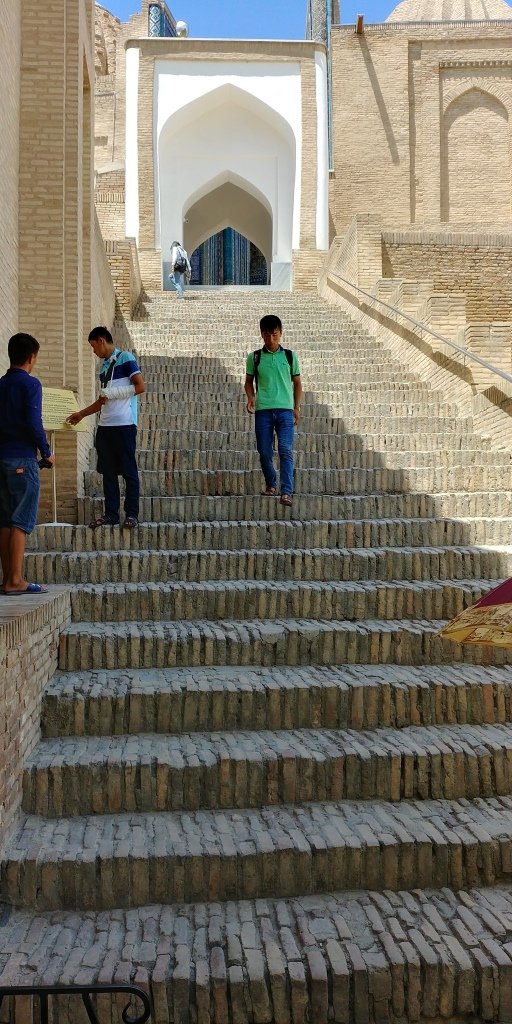
Eight centuries ago ...
In the XIII century Afrasiab was conquered by the ruler of Khorezm - Khorezmshah Mohammad, but the city was not long under his authority. Soon the Mongols invaded the Maverannahr under the leadership of Genghis Khan. On his orders, the resisting city was destroyed to the ground, the inhabitants either were carved out or stolen into slavery. Only a few survivors dared to return to the site of ancient settlement. Afrasiab was deserted and turned into lifeless hills. The buildings of the palaces and quarters of artisans turned into piles of faded clay. On the site of the former city, only grass burned in the sun and camels' thorns growing everywhere.
Already in our day, near the hillfort Afrasiab, the Museum of the History of Samarkand was built, which collected unique exhibits from different epochs of the city's history - coins, ceramics and unique frescoes, which are thousands of years old.
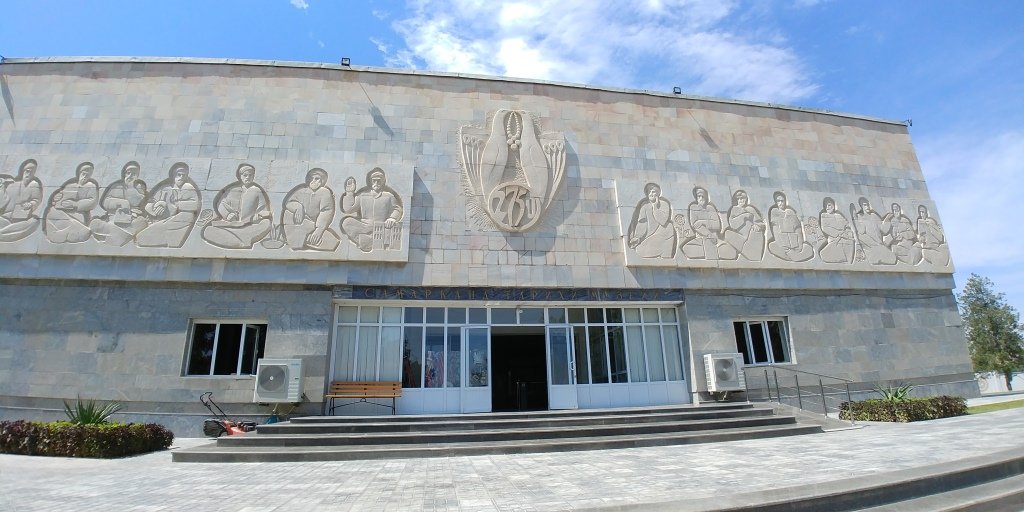
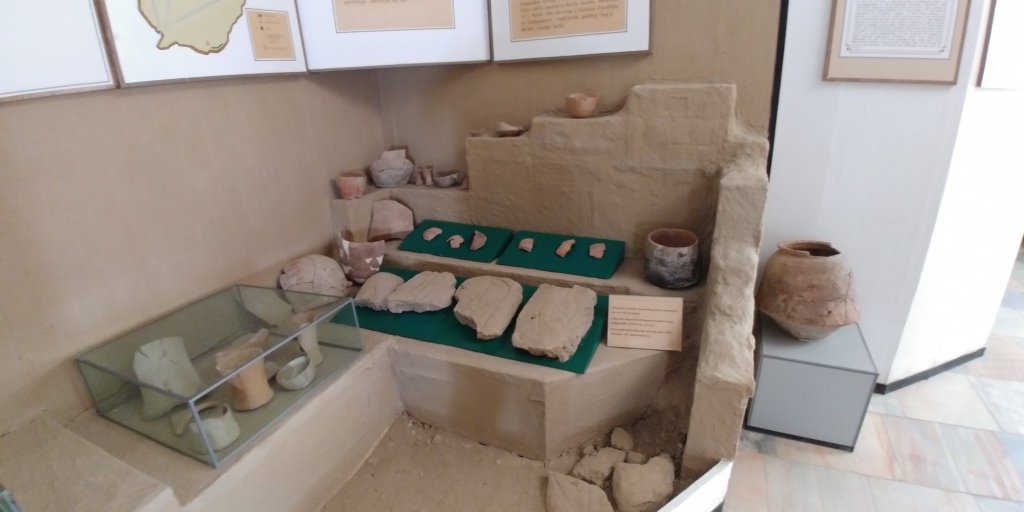
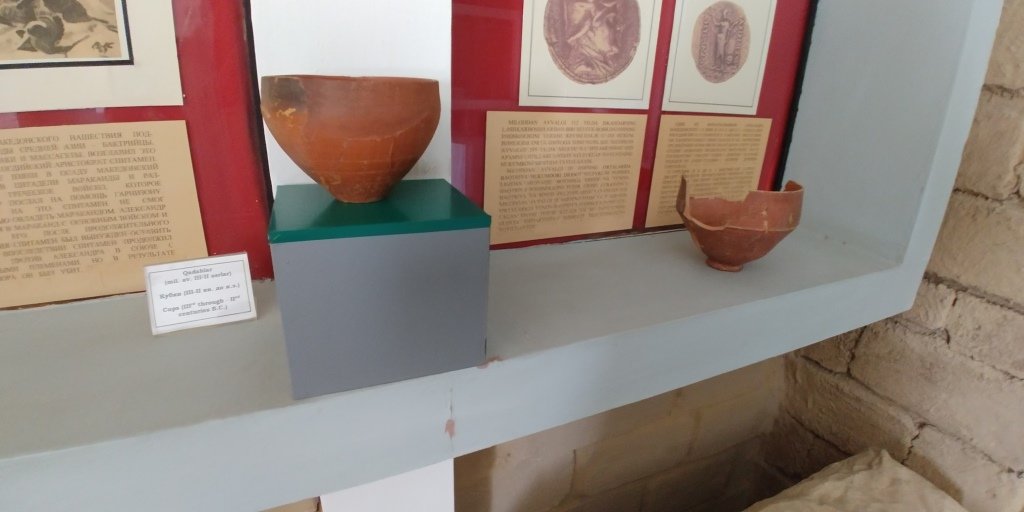
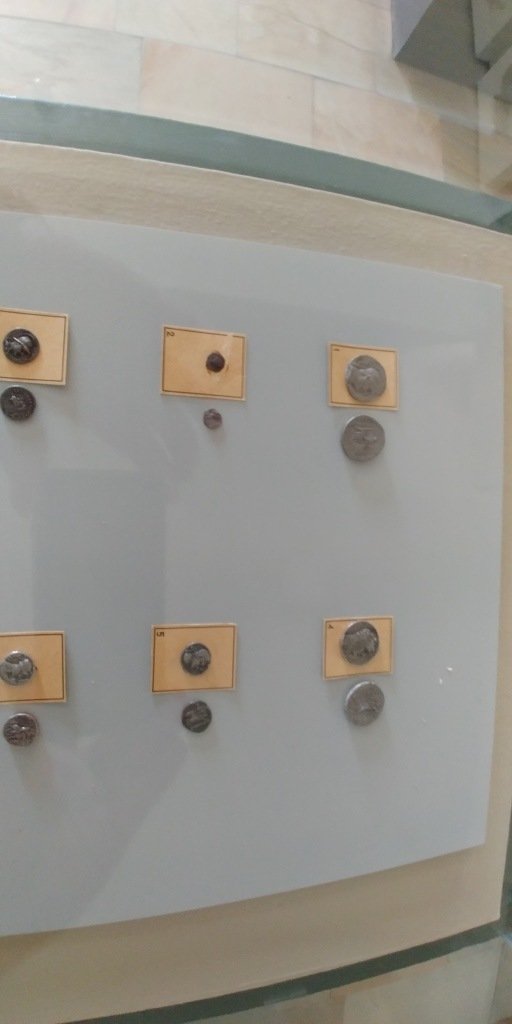
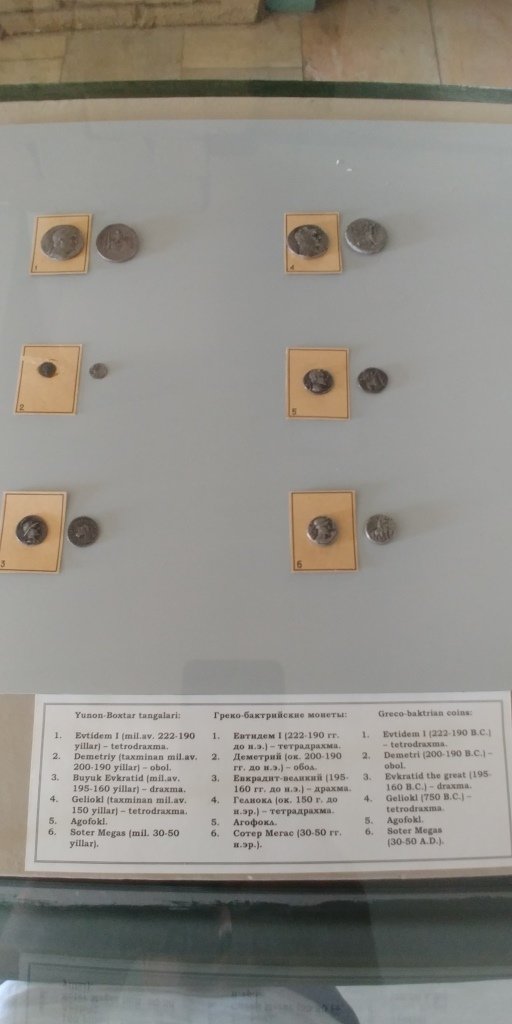
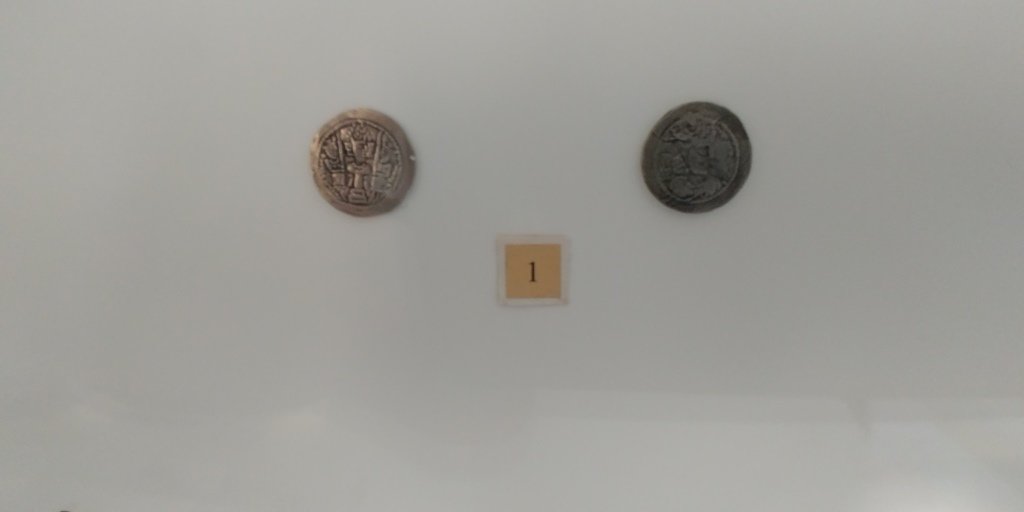

Ancient coins of the VI-IV centuries BC. In addition, during the excavations were found the remains of beautiful frescoes, whose brightness of colors could not be defeated even by the time.
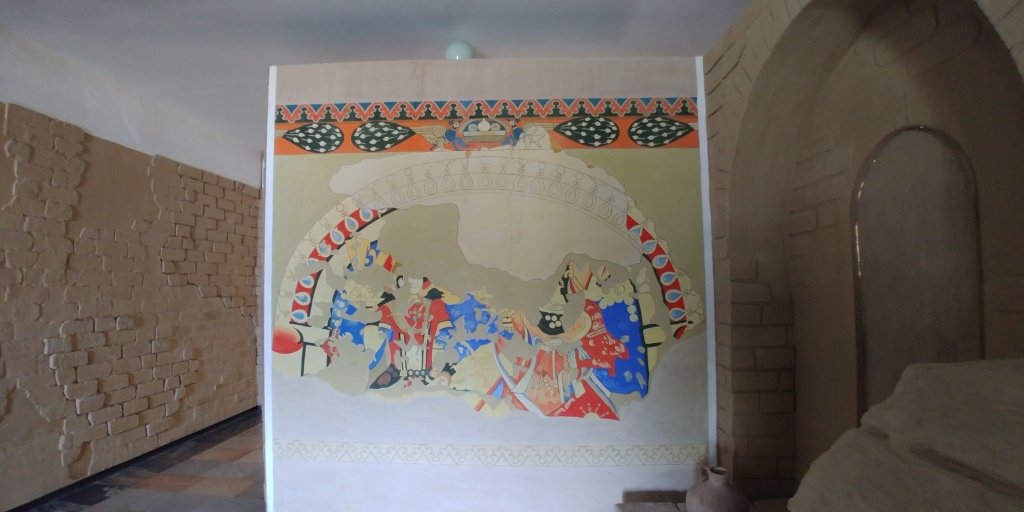
While visiting the museum of the history of Samarkand, I was surprised to see the deformed skulls. Judging by the information I found, it was usually the way the skulls were deformed in Africa or South America. But here it turns out, and in our country, in the distant past, they specially modified the shape of the head ...
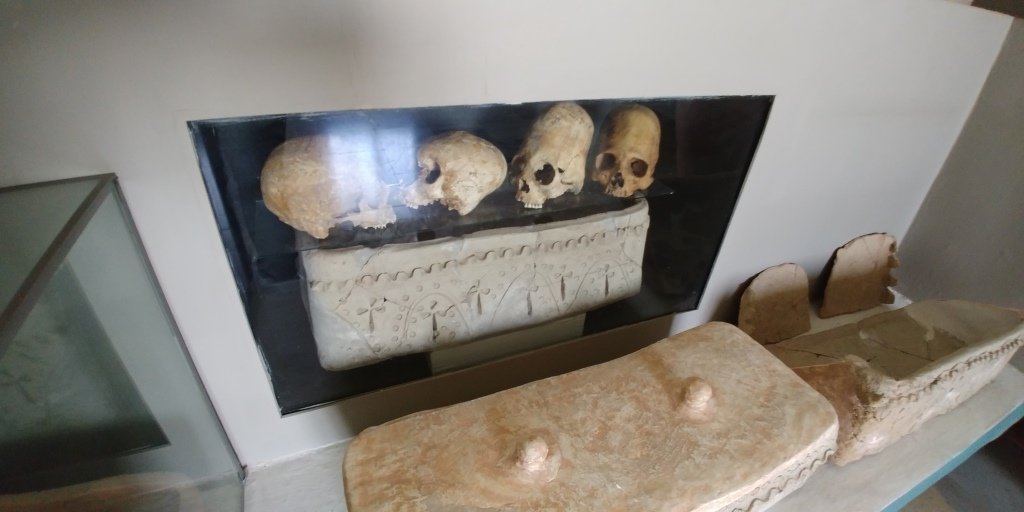
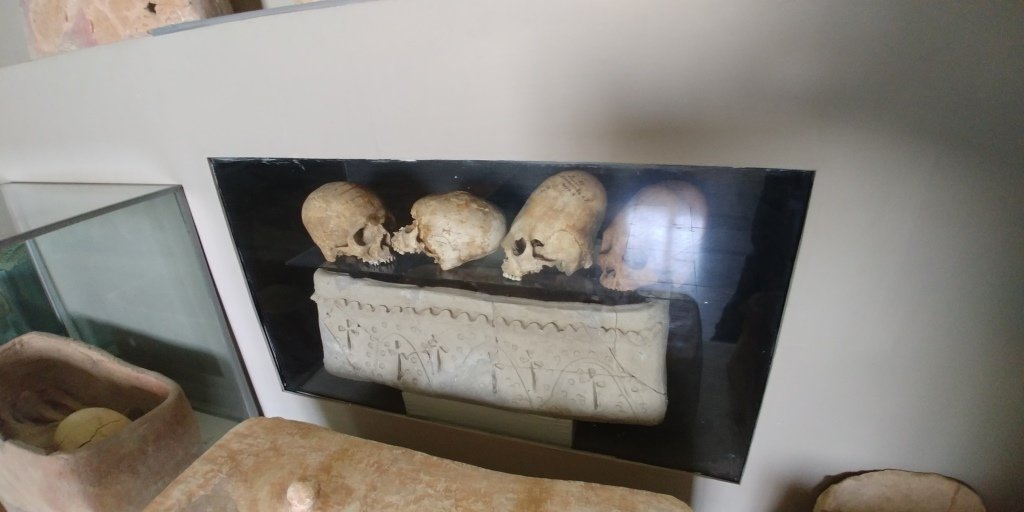
One of the ossuaries, whose age exceeds a thousand years!
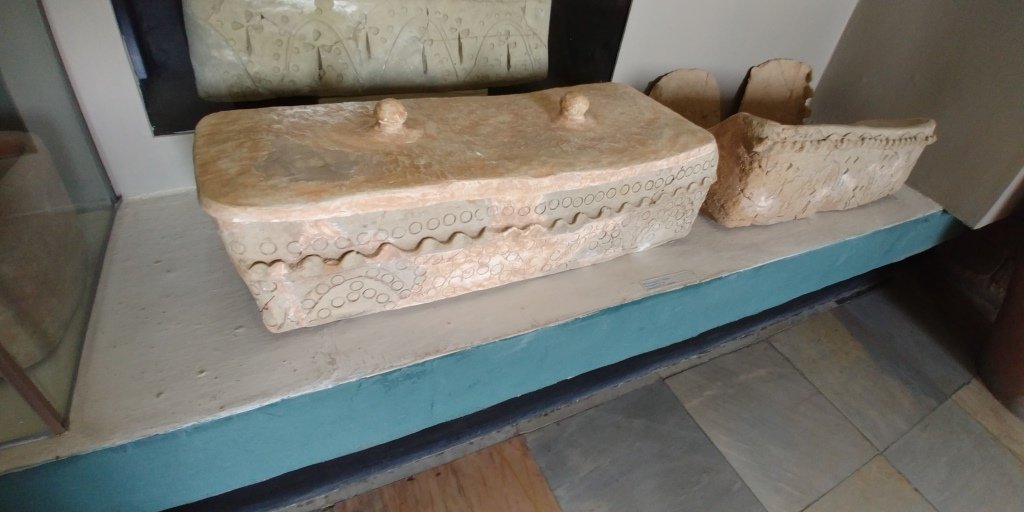
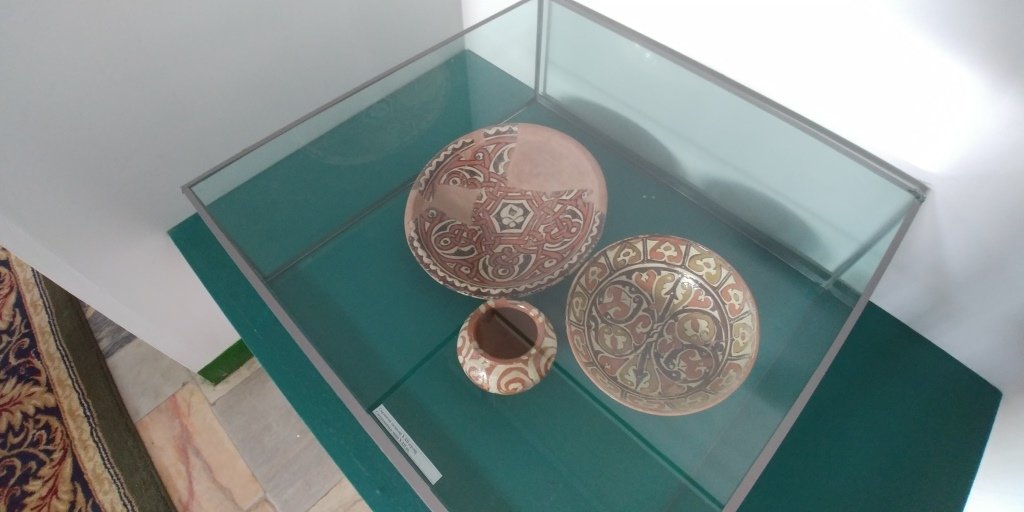
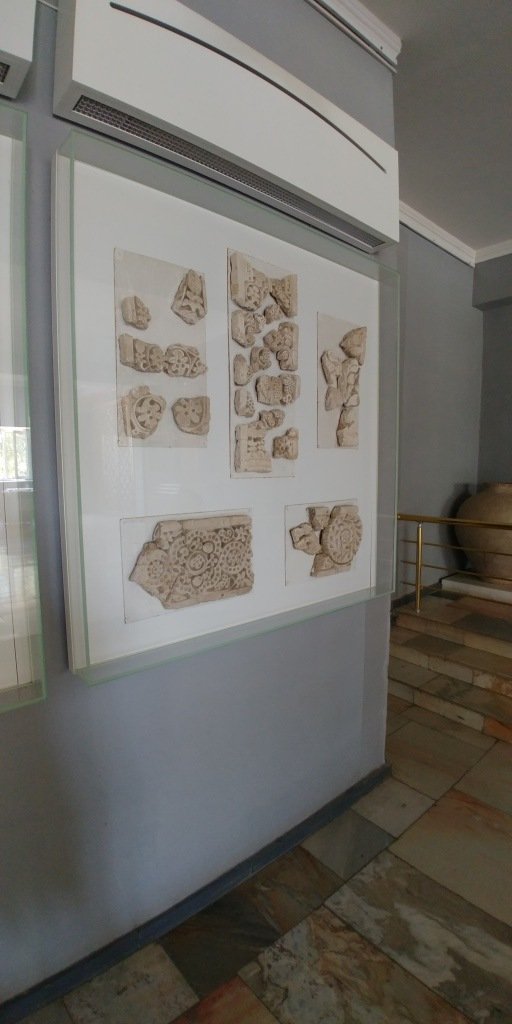
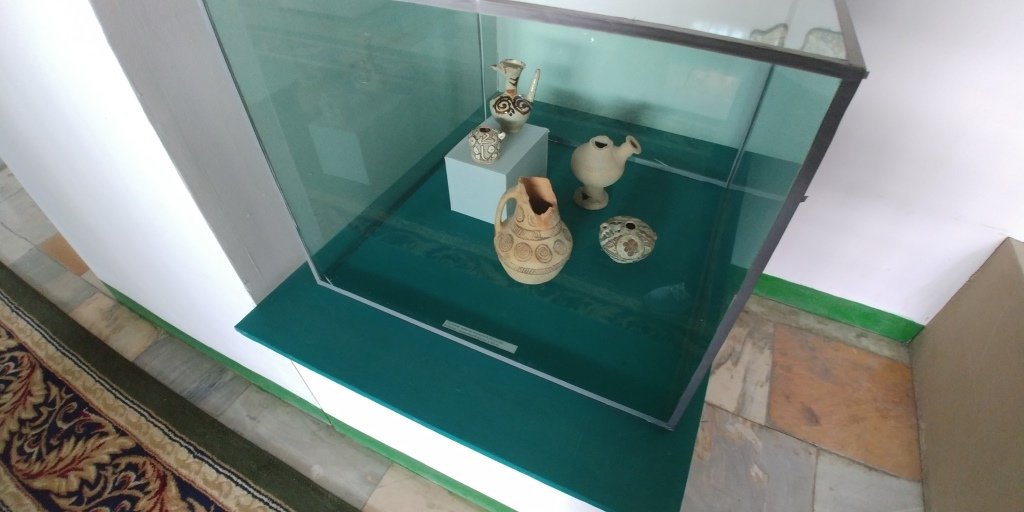
A fragment of the sacrificial altar of fire-worshipers, found during excavations
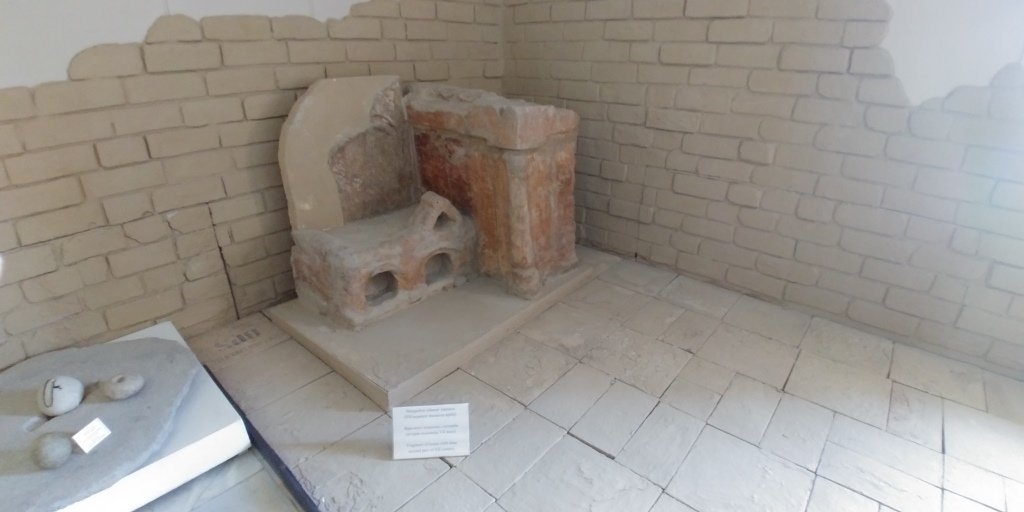
Six centuries ago ...
After the main phase of the Tatar-Mongol conquest passed, next to Afrosiab, people began to settle in its southern part. A new revival of the city is beginning. Now it's Samarkand. In XIV-XV centuries Samarkand grows and becomes the capital of the empire of Tamerlane (Timur). This is the heyday of the city. The bulk of the preserved architectural masterpieces falls on the period of Timurid rule. According to sources, the name "Samarkand" means "rich city"
Tamerlane wanted to make Samarkand the capital of the world and in many respects succeeded. Samarkand was one of the most beautiful and magnificent cities of that period. Monumental buildings were built, educational institutions were opened - madrasah, where students studied the exact sciences.
During the reign of Tamerlane in Samarkand, the largest mosque in the Islamic world was built - the Bibi-Khanym Mosque.
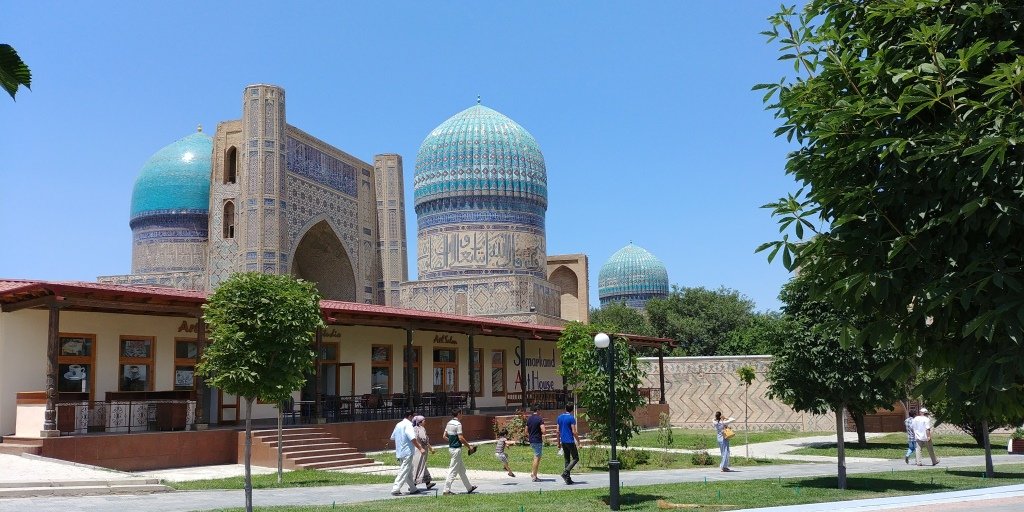
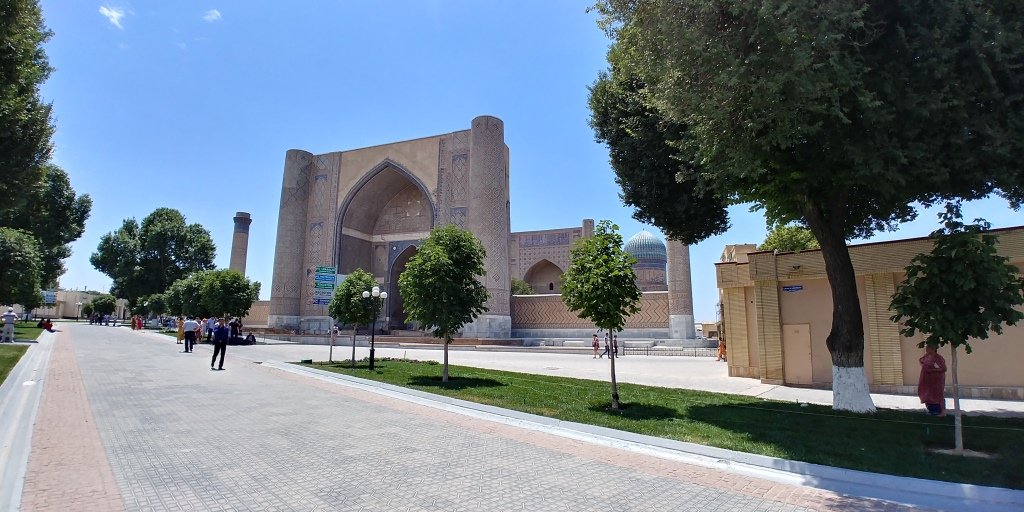

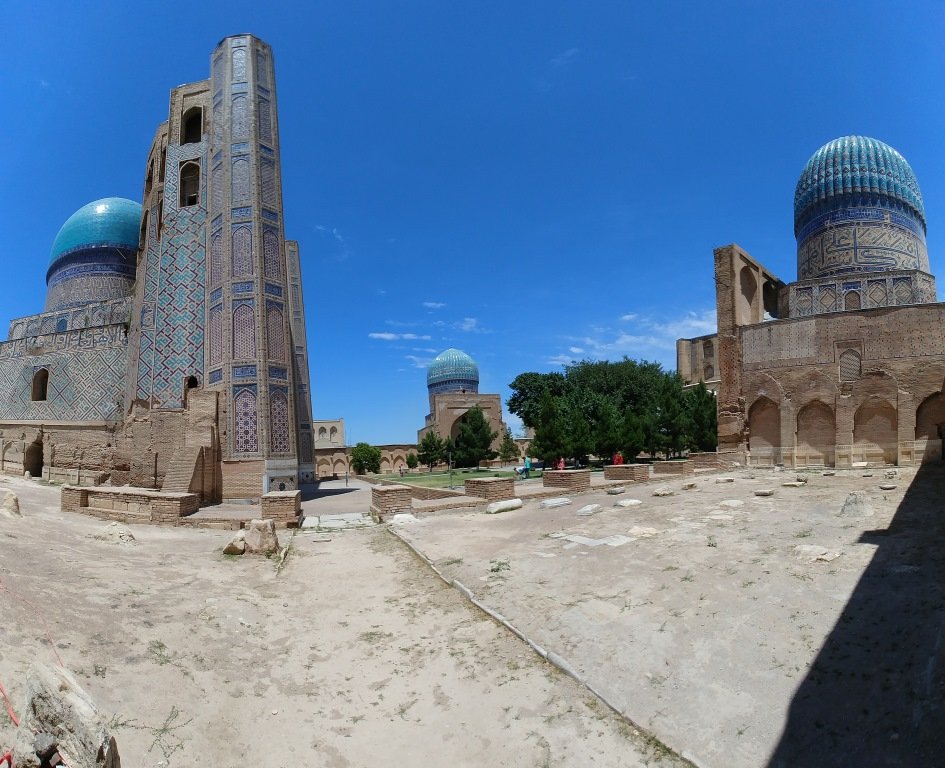
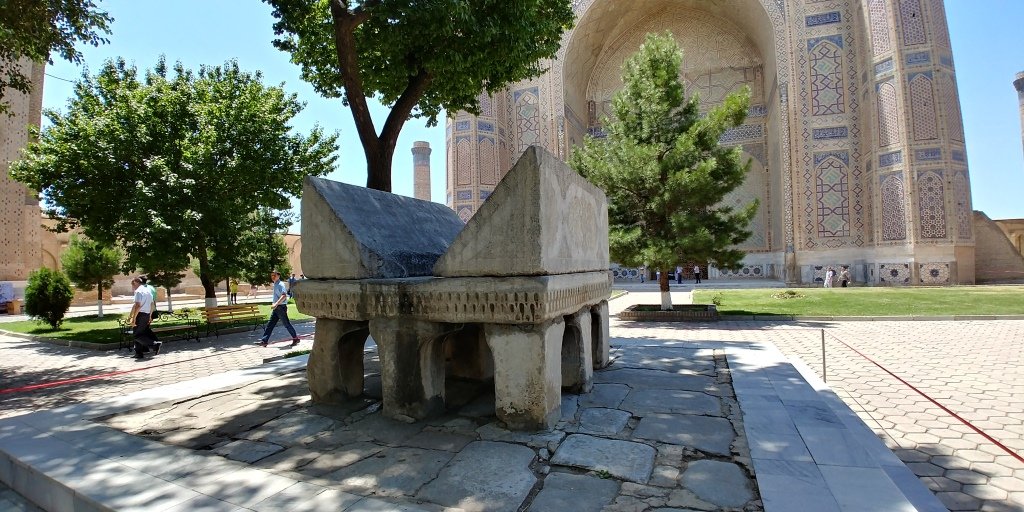
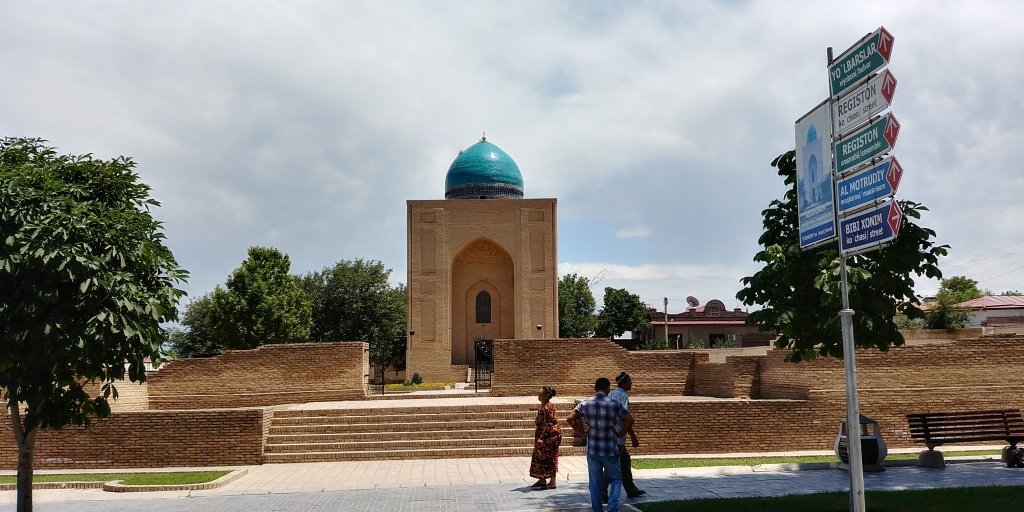
During one of his aggressive campaigns, Tamerlane brought to Samarkand part of the ashes of the holy three religions - Saint Daniyar (the Old Testament’s prophet Daniel). His grave is in the north-eastern part of Afrosiab.
According to legend, the horse carrying the remains of the saint stopped at this place and struck with hooves. In the place where she hit with a hoof a healing spring was hammered. In the photo, the source is under a blue dome, and the brick building next to it is a sardoba (pool) where the sacred water flows.
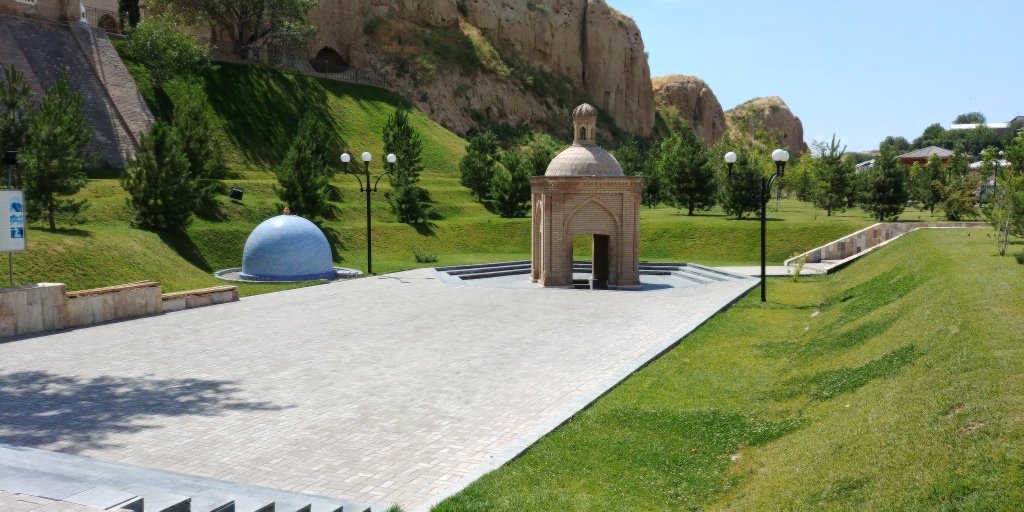
The tombstone (dahmy) is an interesting feature - it is very long. According to legend, the grave of Daniel itself began to increase, reaching almost 18 meters in length.
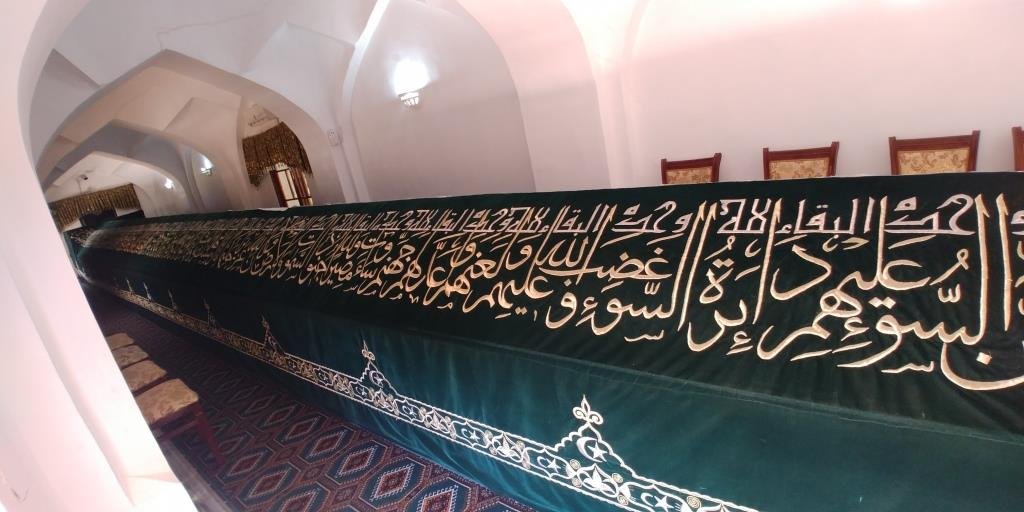
Interesting fact. In 1996, Patriarch of Moscow and All Russia Alexy II visited Samarkand. In particular, he visited the mausoleum of Saint Daniyar and consecrated the dried pistachio tree, which stood on the territory adjacent to the mausoleum. After a while it blossomed.
When the great Tamerlane died, he was buried in the mausoleum of Gur-Emir ("The Tomb of the Kings"). Initially, the building was conceived as a small madrasah - for training children of the Samarkand nobility, but after the death of Tamarlan's beloved grandson - Muhammad-Sultan - changed his appointment. Now the bodies of Tamerlane, his sons Shahrukh and Miranshakh, his grandsons Muhammad Sultan and the learned ruler of Ulugbek, as well as the ashes of the spiritual mentor Tamerlan Mir Said Baraka, rest here.
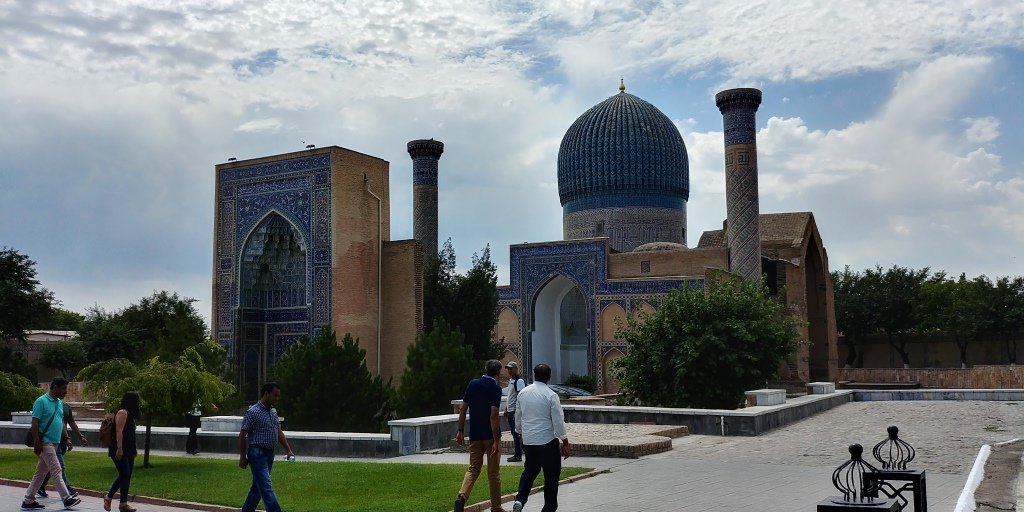
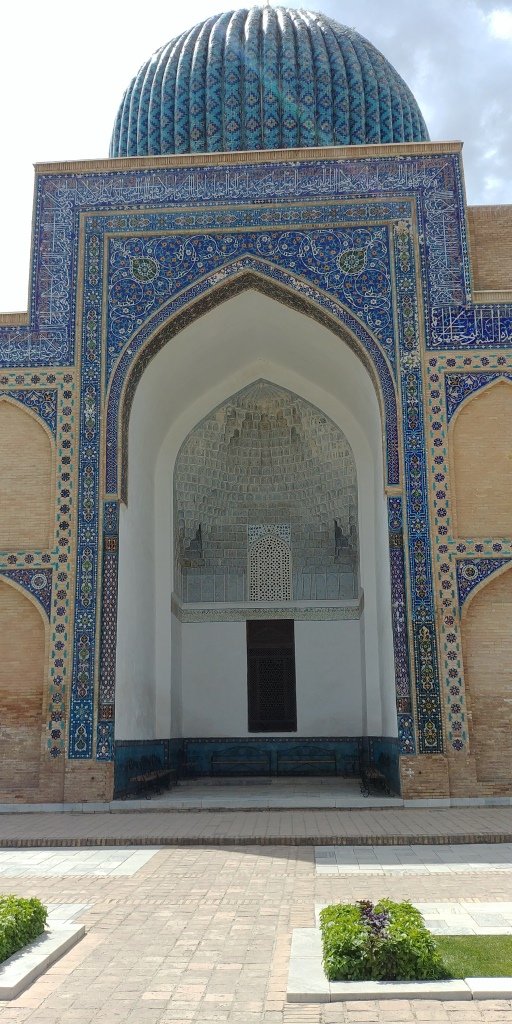
The grave of Tamerlane is in the center of the room - under a black nephrite tombstone. In fact, under the floor there is a small crypt where tourists are not allowed, the outlines of which completely repeat the upper hall and the tombstones in the crypt completely repeat the tombstones located at the top. But already in the crypt lies the remains of the great commander and ruler.
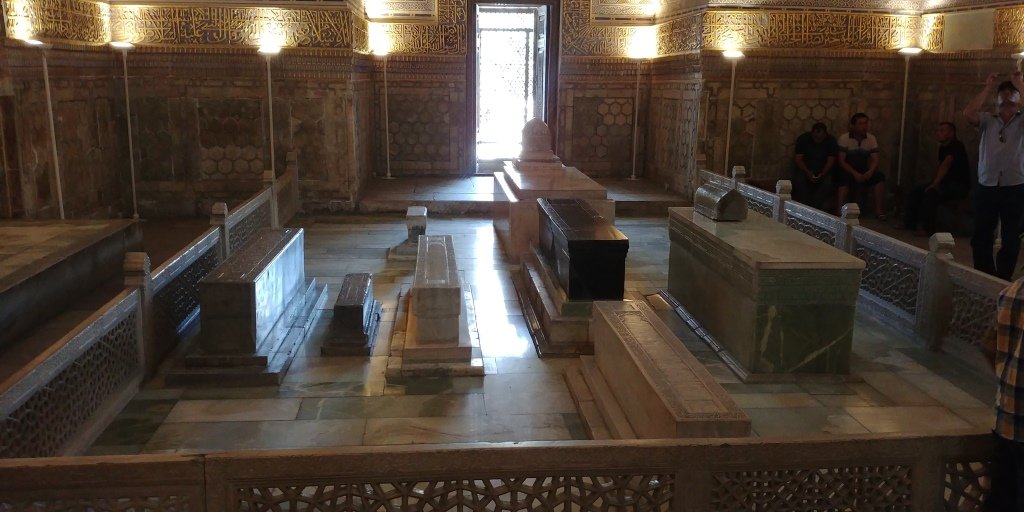
The shrine is truly royal - the walls and ceilings are richly decorated with gold, majolica and glaze. The patterns are written out incredibly thin and carefully.
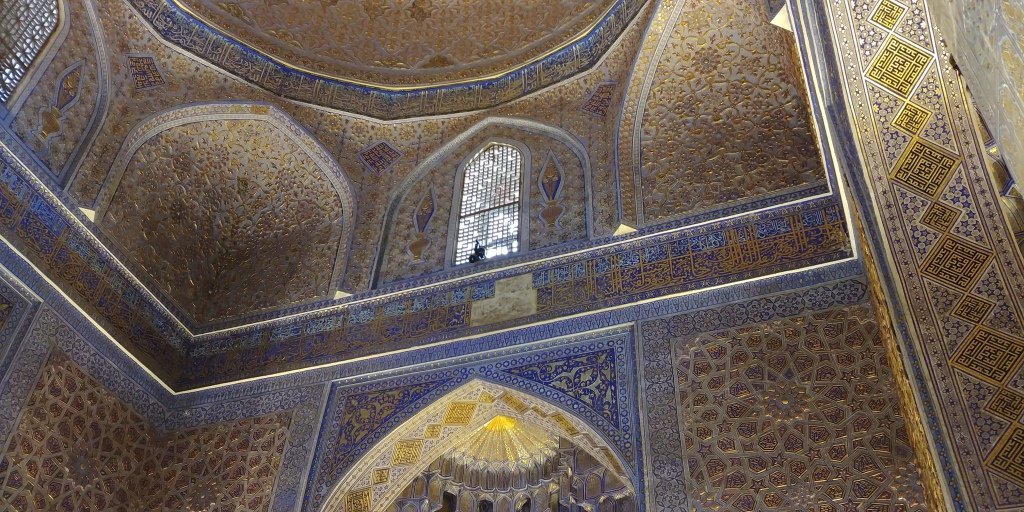
With the grandson of the formidable and mighty Tamerlane - Ulugbek, Samarkand becomes one of the largest centers of world science. The best minds worked in the madrassas and the observatory of the learned ruler. For example, Kazi-Zade ar-Rumi, al-Kashi, al-Kushchi are Asian scientists who have written their names in the development of world astronomy and mathematics. During this period, the locations of 1018 stars were determined at the observatory with astonishing accuracy. The period of the Earth's rotation around the Sun was determined. The error was only 58 seconds! The scholarly heritage of the learned ruler was studied in Europe and his star catalog was compulsorily present in every European observatory.
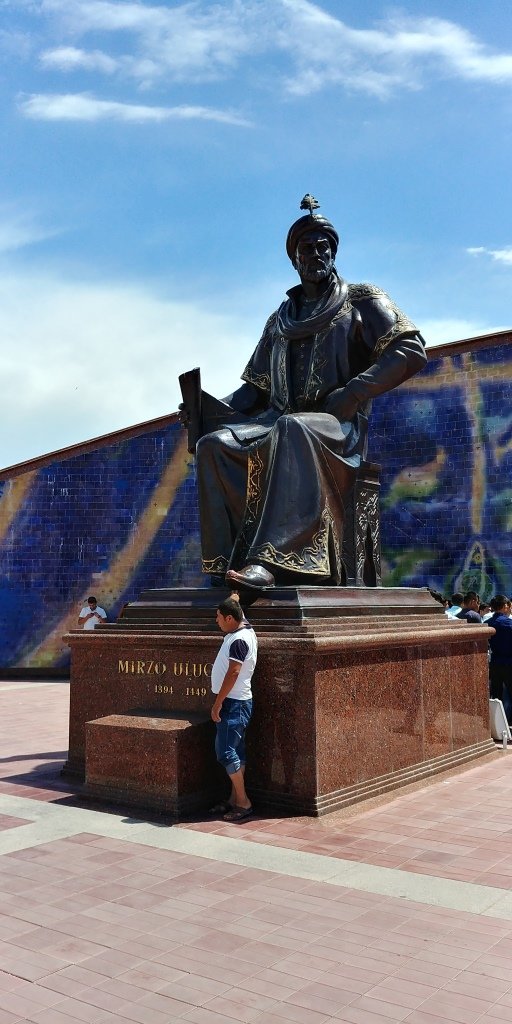
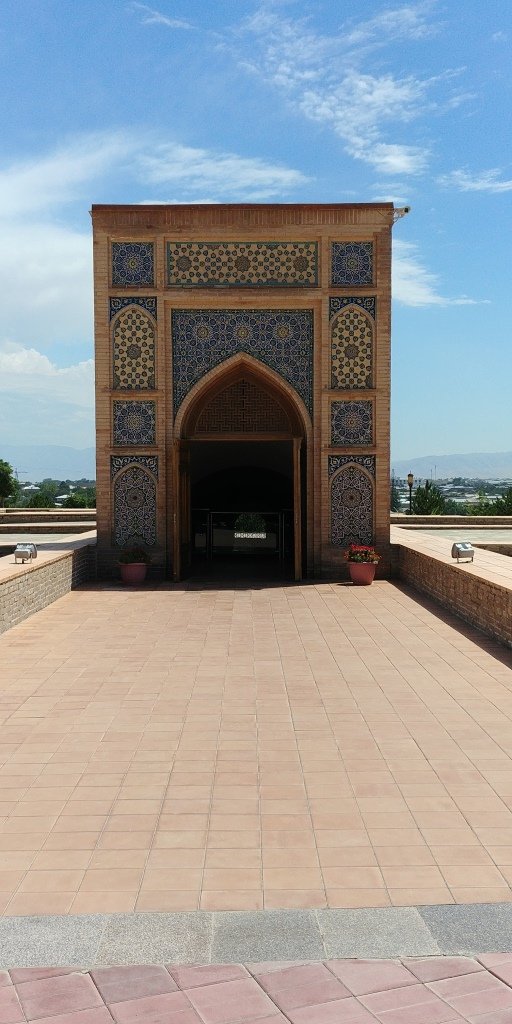
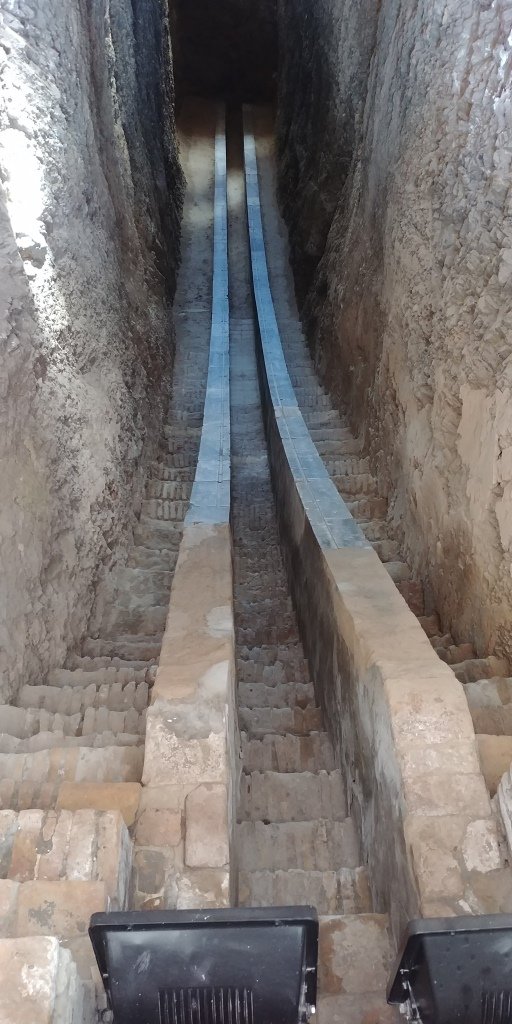
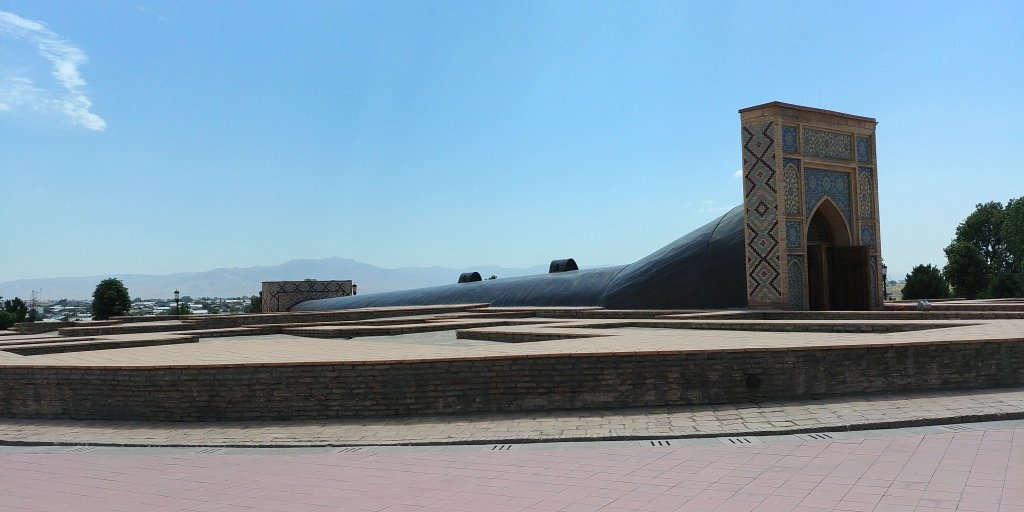
In addition to the observatory, on the order of Ulugbek, a madrasah (1417-1420) was built, in which theology, mathematics, geometry, logic and the natural sciences were studied. Lectures were read by outstanding scientists of the time. Madrasah was built in the western part of Registan Square.
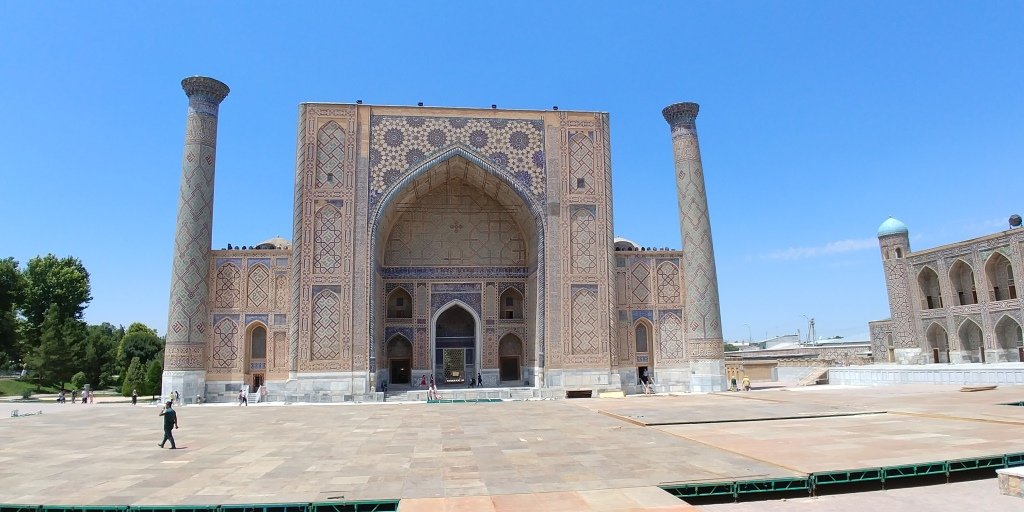
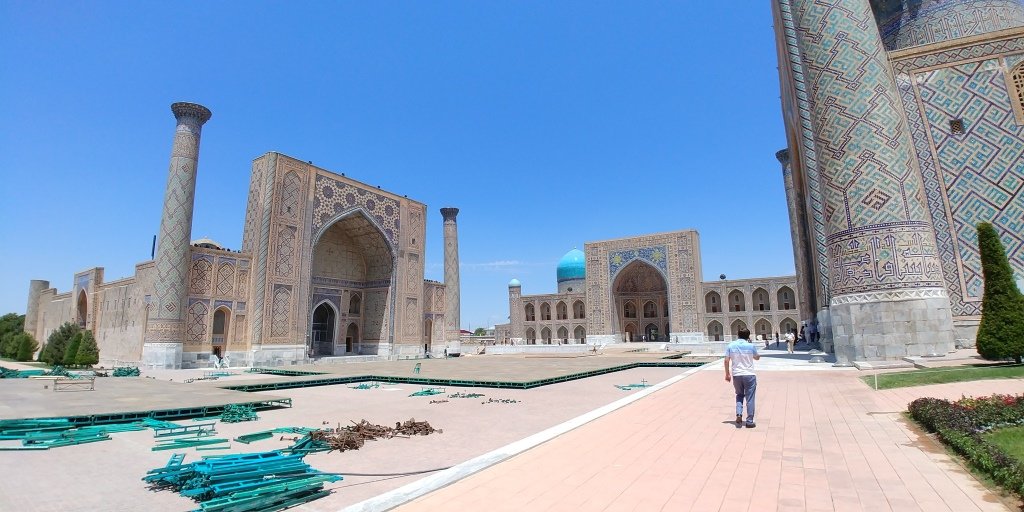
Unfortunately, the learned ruler was killed by order of his own son, who was eager to take his place. The observatory was destroyed and only the madrassah survived to our days practically unchanged.
Four centuries ago ...
In the XVI century, Samarkand began to lose its importance in connection with the transfer of the country's capital to Bukhara. However, everything changed with the appointment of the mayor of the aristocracy Yalangtush Bahadur. During his reign, the city receives a new impetus for development.
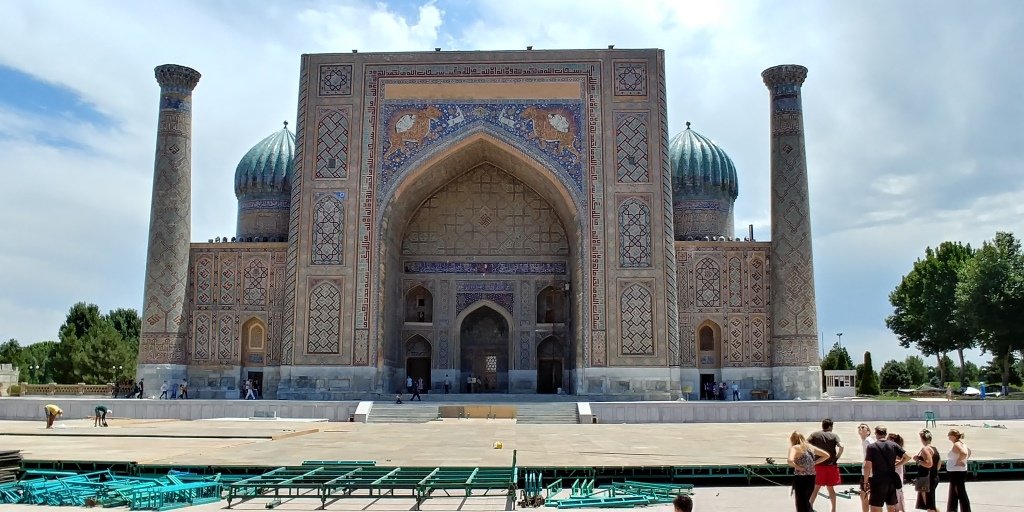
In the Registan, next to the Madrassah of Ulugbek, the Sherdor Madrasah ("Tiger's Abode" - 1619-1636) and the Till-Kari Madrassah ("The Golden Madrassah", 1646-1660) are being built. Madrasah Sherdor mirror repeats standing in front of the Madrassah of Ulugbek, although with some distortions in proportions. On the facade of the entrance portal are depicted fabulous heraldic beasts of Samarkand - leopards with the sun on their backs. The external and internal facades are richly decorated with gilding, glazed bricks and mosaic.

The third Madrasah - the Till-Kari madrassa was built in the northern part of Registan. The madrasah is richly decorated with gilding, glaze and majolica. The interior of the mosque on the territory of the madrasah is very richly painted. They are painted in the technique of "kundal" with abundant use of gold (that's why it is called "Golden madrasah").
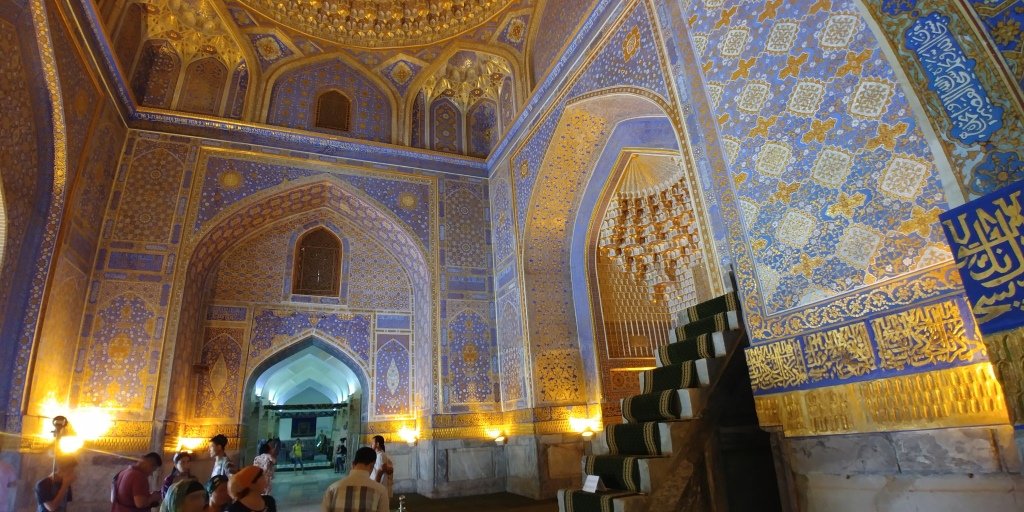

All three madrasahs comprise the architectural complex of Registan, which is a visiting card of Samarkand and the most unique example of medieval architecture. Registan is rightfully inscribed on the UNESCO World Heritage List and attracts millions of tourists annually.
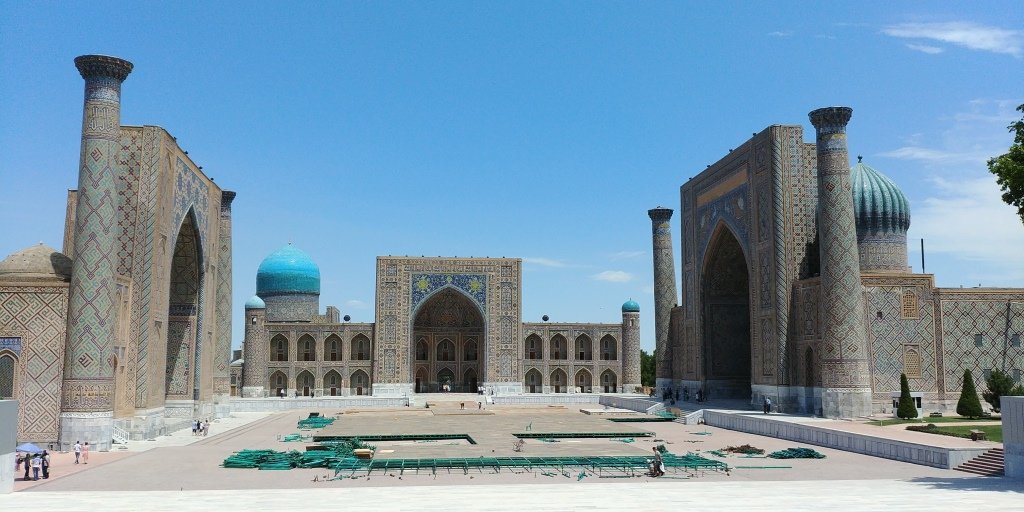
A century and a half ago ...
But the history of Samarkand does not end with the Middle Ages - it only continues! In the XIX century, the territory of modern Uzbekistan was annexed to the Russian Empire and the "Russian track" blended harmoniously with the ancient architecture. And not only Russian, but also European - in the photo below pictures of the Orthodox Church and the Polish-Catholic church.
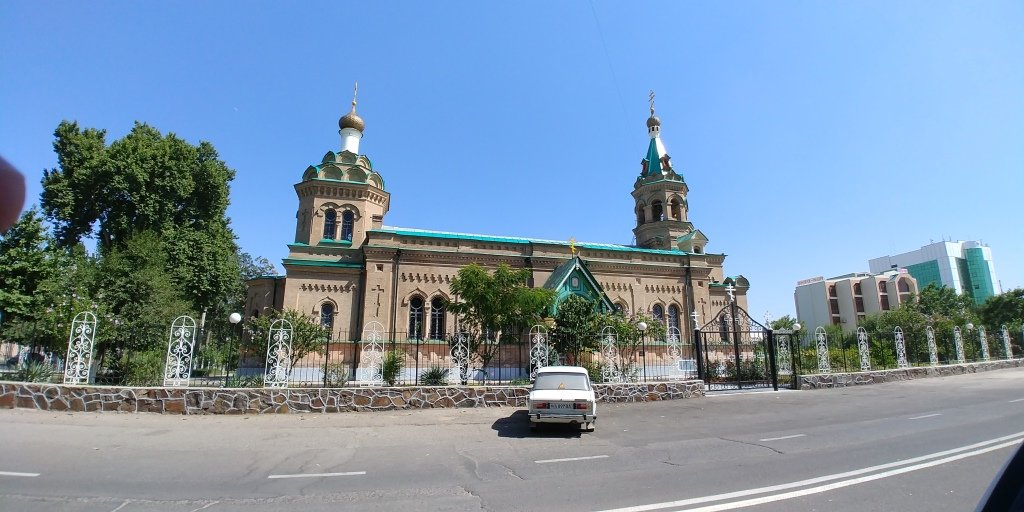
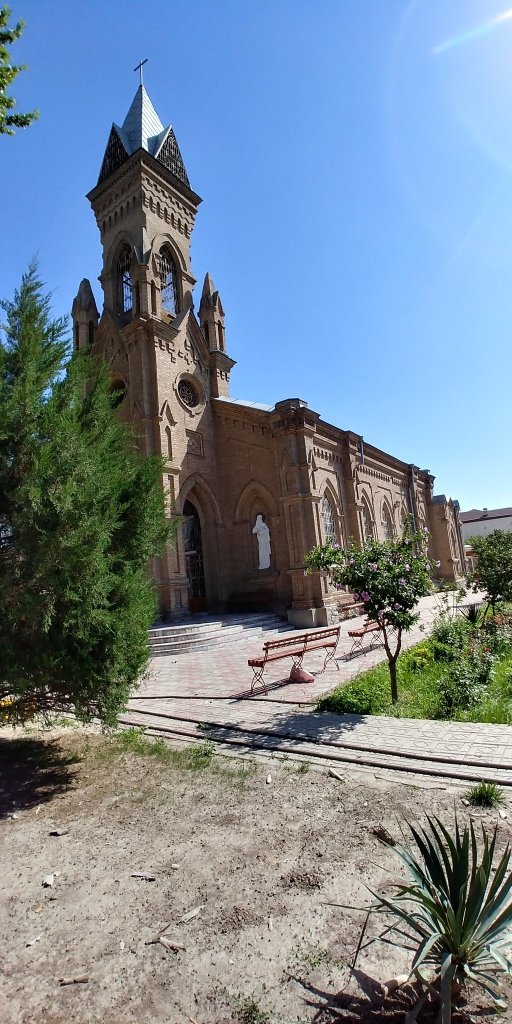
Our days…
Samarkand surprisingly manages to combine antiquity and modernity. Already in the years of Uzbekistan's independence, a monument to Tamerlane was erected in Samarkand - sitting on the throne and looking towards Registan.
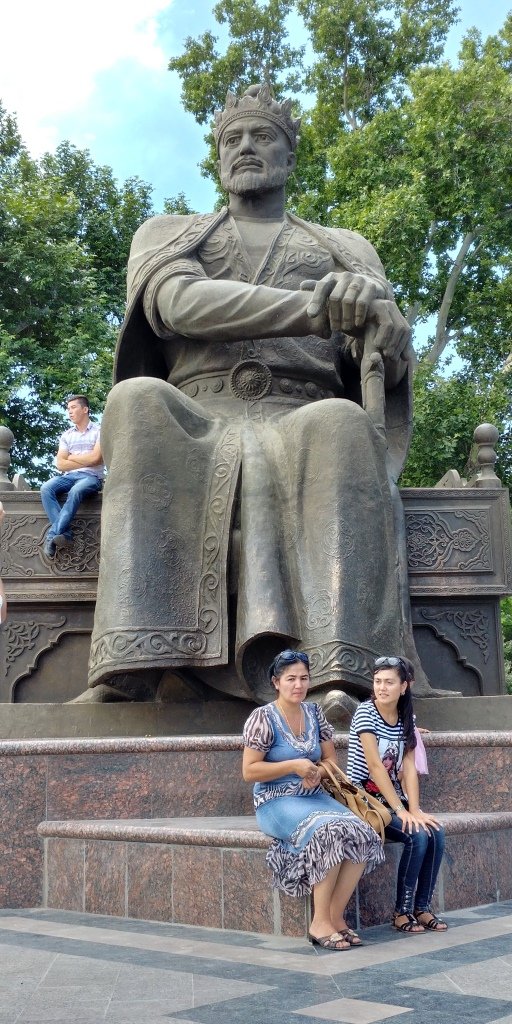
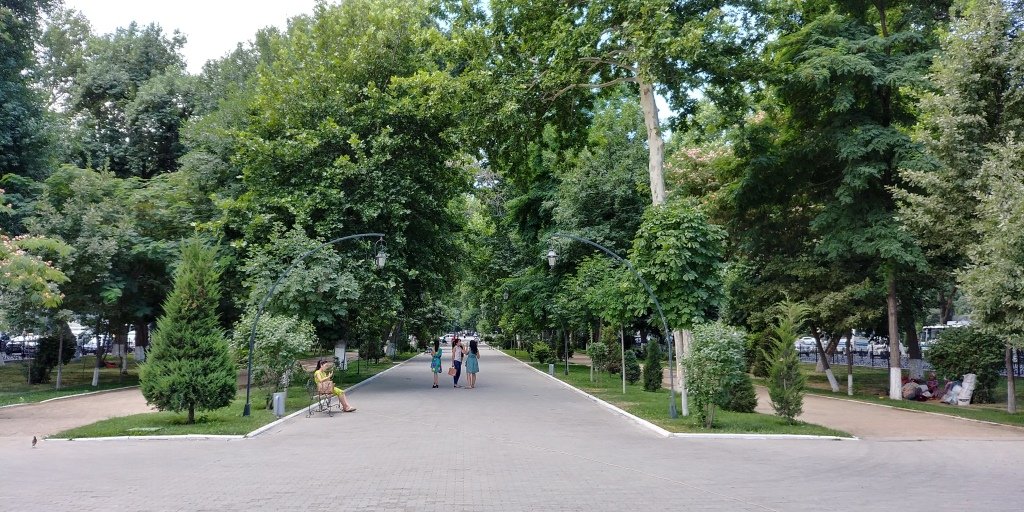
Behind him is the University Boulevard, one of Samarkand's most beloved places. A long street, planted with age-old oaks and plane trees (plane trees).
By the way, there probably branded taxis more than in Tashkent - yellow cars scurry back and forth. It's like New York with its "yellow cab"
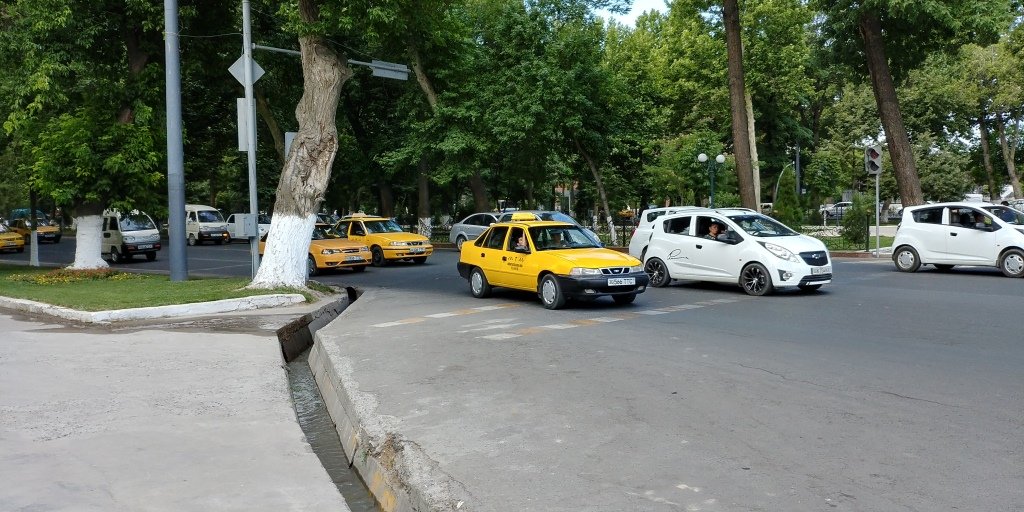
By the way, tourists can come from Tashkent on the comfortable high-speed train “Afrosiab”. The journey takes only two hours ...
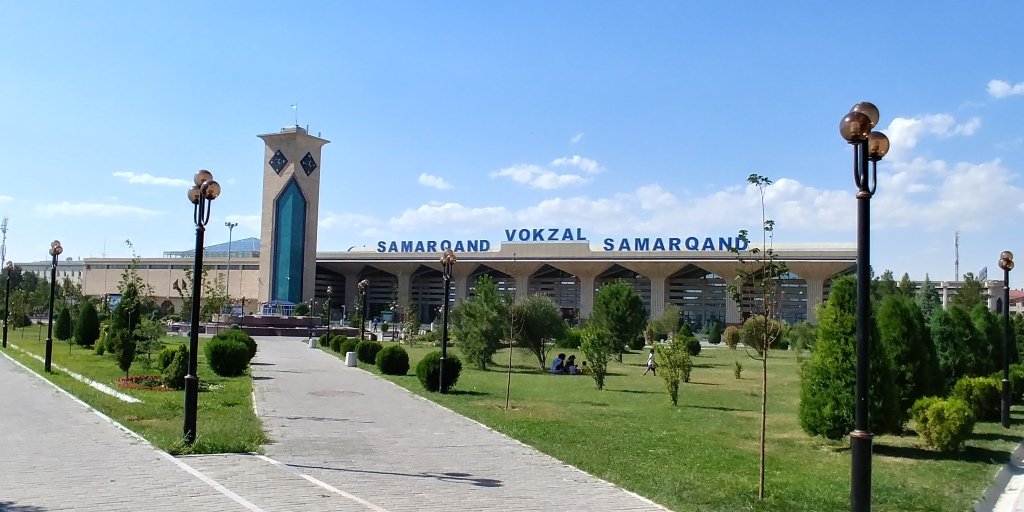
And then from the station to hire a taxi and go sightseeing. By the way, very soon you can take a taxi instead of a taxi on high-speed trams. Last year, they began to lay roads for the tram and the first branch was already launched. The tram already traveled to Samarkand between 1947-1973 and this is his second coming. Now we have laid one branch and are working on the second branch.
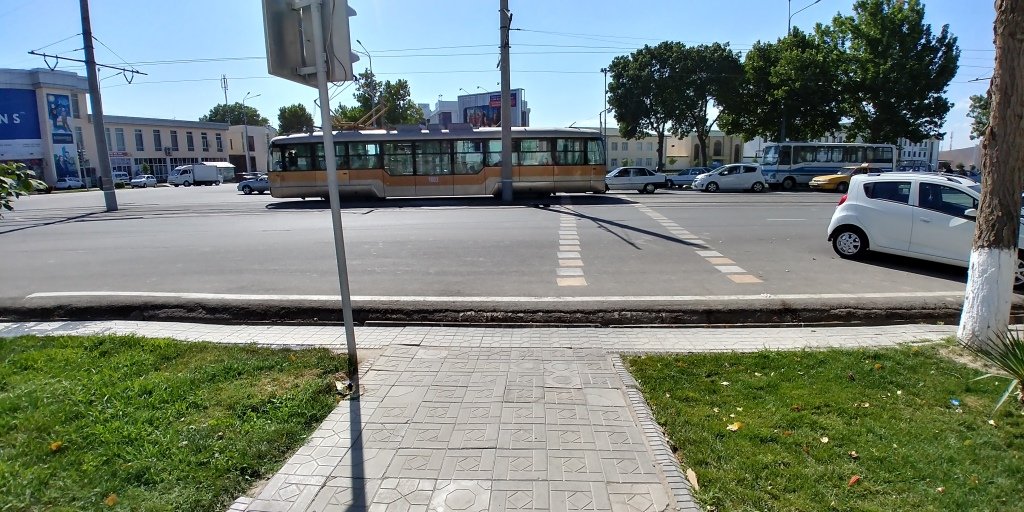
And finally ...
A small reference information for tourists who decided to visit Samarkand:
Samarkand planes fly from Tashkent and from Moscow. You can also get there by train - the most comfortable and fastest option is the “Afrasiab” train. A ticket to the economy class (very, very convenient economy class) from Tashkent costs 11 dollars.
All the taxi drivers and ordinary people speak Russian in good order. A lot of people speak English too.
Choose hotels of B & B class - they are very clean, comfortable and comfortable. The cost of the room will cost 40-45 dollars per night.
Taxi from the station to the city center, where the main attractions are located will cost 10-12 thousand Uzbek sums (about 1.5 dollars).
There you can find a guide at the station. An average of 30-50 dollars for the whole day of work.
Be sure to try the Samarkand pilaf on sesame oil. The cost per serving per adult 8000 UZS - about 1 dollar.
Be sure to buy the famous Samarkand cakes - they are very tasty. The price is about 35-40 cents. It is best to buy flat cakes near Ulugbek Observatory - there they are the most delicious.
The cost of admission tickets is about 5 dollars for foreigners and 12 cents for citizens of Uzbekistan
All major attractions are located next to each other, so you can get around them on foot.
Buy all sorts of magnets and souvenirs - they are incredibly cheap. For 1 dollar I bought a whole heap of magnets on the refrigerator.
Near the monuments of architecture beggars can rush to you. Therefore, stock up with some small bills to get rid of especially annoying beggars. Or just run them out if they get very bored.
And in the end I want to say - MUST VISIT SAMARKAND - you will not regret !!!
!steemitworldmap 39.648196 lat 66.969137 long Samarkand - a journey through the centuries ... Short topic about long story d3scr

